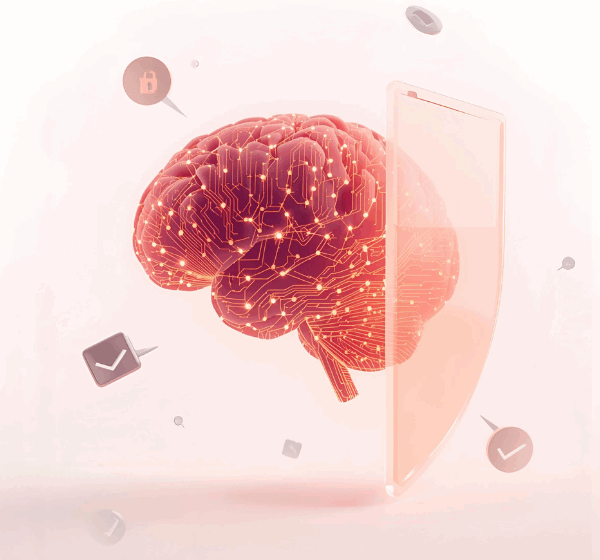
AI Security Challenges: Protecting Data in Automation
AI Security Challenges: Protecting Data in the Age of Automation
Artificial intelligence and automation are unlocking unprecedented levels of efficiency and innovation for businesses. They power everything from customer service chatbots to complex supply chain optimizations. However, as organizations increasingly integrate AI into their core operations, they also expose themselves to a new and complex set of security risks. The very intelligence that makes AI so powerful can also be exploited in ways that traditional cybersecurity measures are not equipped to handle.
As an AI development team, we understand that building powerful AI systems is only half the battle; securing them is just as critical. This post will explore the unique security challenges that arise in the age of automation. We will cover the key vulnerabilities, from protecting sensitive training data to defending against sophisticated adversarial attacks, and provide actionable insights to help business leaders and IT professionals build a robust security posture for their AI-driven future.
The Unique Security Landscape of AI
AI systems are fundamentally different from traditional software. They are not programmed with explicit rules but rather learn from data. This creates unique vulnerabilities that require a specialized approach to security. Traditional cybersecurity focuses on protecting networks, servers, and endpoints. AI security must also protect the data, the models, and the intricate pipelines that connect them.
The stakes are high. A compromised AI system can lead to massive data breaches, biased and unfair business decisions, significant financial loss, and erosion of customer trust. Understanding the specific threats is the first step toward mitigating them.
1. Data Privacy and Poisoning: The Garbage-In, Garbage-Out Problem
AI models are only as good as the data they are trained on. This dependency on data creates two major security challenges: data privacy and data poisoning.
Protecting Sensitive Training Data
AI systems, especially in sectors like healthcare and finance, are often trained on vast datasets containing sensitive personal information. Protecting this data is paramount. A breach of the training data not only exposes private information but can also reveal insights into the AI model’s architecture, making it easier for attackers to exploit. Strong data governance, encryption, and access control policies are the baseline for security. Advanced techniques like differential privacy, which adds statistical “noise” to data to anonymize it, are becoming essential for training models without compromising individual privacy.
The Threat of Data Poisoning
Data poisoning is a malicious attack where an adversary intentionally feeds bad data into an AI model’s training set. The goal is to manipulate the model’s behavior and cause it to make incorrect predictions or classifications. For example, an attacker could introduce mislabeled data to a loan approval model to cause it to unfairly deny qualified applicants. Defending against this requires rigorous data validation, anomaly detection to flag suspicious inputs, and maintaining a secure, auditable data pipeline.
Actionable Insight: Implement a “zero-trust” approach to your data pipeline. Verify the integrity and source of all data used for training AI models and continuously monitor for anomalies that could indicate a poisoning attempt.
![]()
2. Adversarial Attacks: Tricking the Machine
One of the most sophisticated threats to AI is the adversarial attack. In this scenario, an attacker makes small, often imperceptible changes to an input to trick an AI model into making a mistake.
Imagine a facial recognition system that can be fooled by a person wearing a specific pair of glasses, or a self-driving car’s image recognition system that misinterprets a stop sign as a speed limit sign because of a few strategically placed stickers. These are not theoretical risks; they have been demonstrated in research environments.
These attacks exploit the complex, non-linear nature of machine learning models. Defending against them involves a technique known as adversarial training, where the AI model is intentionally trained on examples of adversarial inputs. This makes the model more robust and less susceptible to being fooled by manipulated data.
Actionable Insight: Partner with AI security experts to conduct adversarial testing on your critical AI models. This “red teaming” for AI helps identify vulnerabilities before they can be exploited in a real-world scenario.
3. Model Theft and Reverse-Engineering
Your AI models are a valuable intellectual property. They are the result of significant investment in data collection, research, and development. Attackers are increasingly targeting the models themselves, either to steal them outright or to reverse-engineer them to understand their inner workings.
By repeatedly querying a model with different inputs and observing the outputs, an attacker can infer the model’s architecture and parameters. This is known as a model extraction attack. Once an attacker has this information, they can replicate the model, exploit its weaknesses, or develop more effective adversarial attacks.
Protecting against model theft involves a combination of strategies, including limiting access to the model’s API, implementing rate limiting to prevent excessive querying, and using watermarking techniques to embed a unique signature within the model’s outputs to prove ownership.

4. Algorithmic Bias and Fairness
While not a traditional security threat like a data breach, algorithmic bias is a significant risk that can have severe reputational and legal consequences. If an AI model is trained on biased data, it will perpetuate and even amplify that bias in its decisions.
For example, a hiring model trained on historical data from a company that predominantly hired from one demographic may learn to unfairly penalize candidates from other demographics. This is not only unethical but can also expose the company to legal challenges.
Ensuring fairness and mitigating bias is a critical component of AI security. This requires careful auditing of training data to identify and correct for biases, as well as ongoing monitoring of the model’s outputs to ensure they are fair and equitable. AI development teams must use specialized tools to test for bias across different subgroups and build explainability into their models, so it’s clear why an AI made a particular decision.
Actionable Insight: Establish an AI ethics and governance framework within your organization. This framework should define your principles for fairness, transparency, and accountability and guide the entire lifecycle of AI development and deployment.
Conclusion: Building a Secure AI Foundation
As AI becomes more integrated into business, securing these intelligent systems must be a top priority. The unique challenges of AI security—from data poisoning and adversarial attacks to model theft and algorithmic bias—demand more than just traditional cybersecurity measures. They require a holistic approach that protects the entire AI lifecycle.
Building a secure AI foundation starts with a commitment to security by design. It means working with AI development experts who understand these threats and know how to build robust, resilient, and responsible AI systems. By prioritizing data governance, conducting rigorous testing, and establishing strong ethical frameworks, you can harness the power of automation while safeguarding your data, your customers, and your business.


